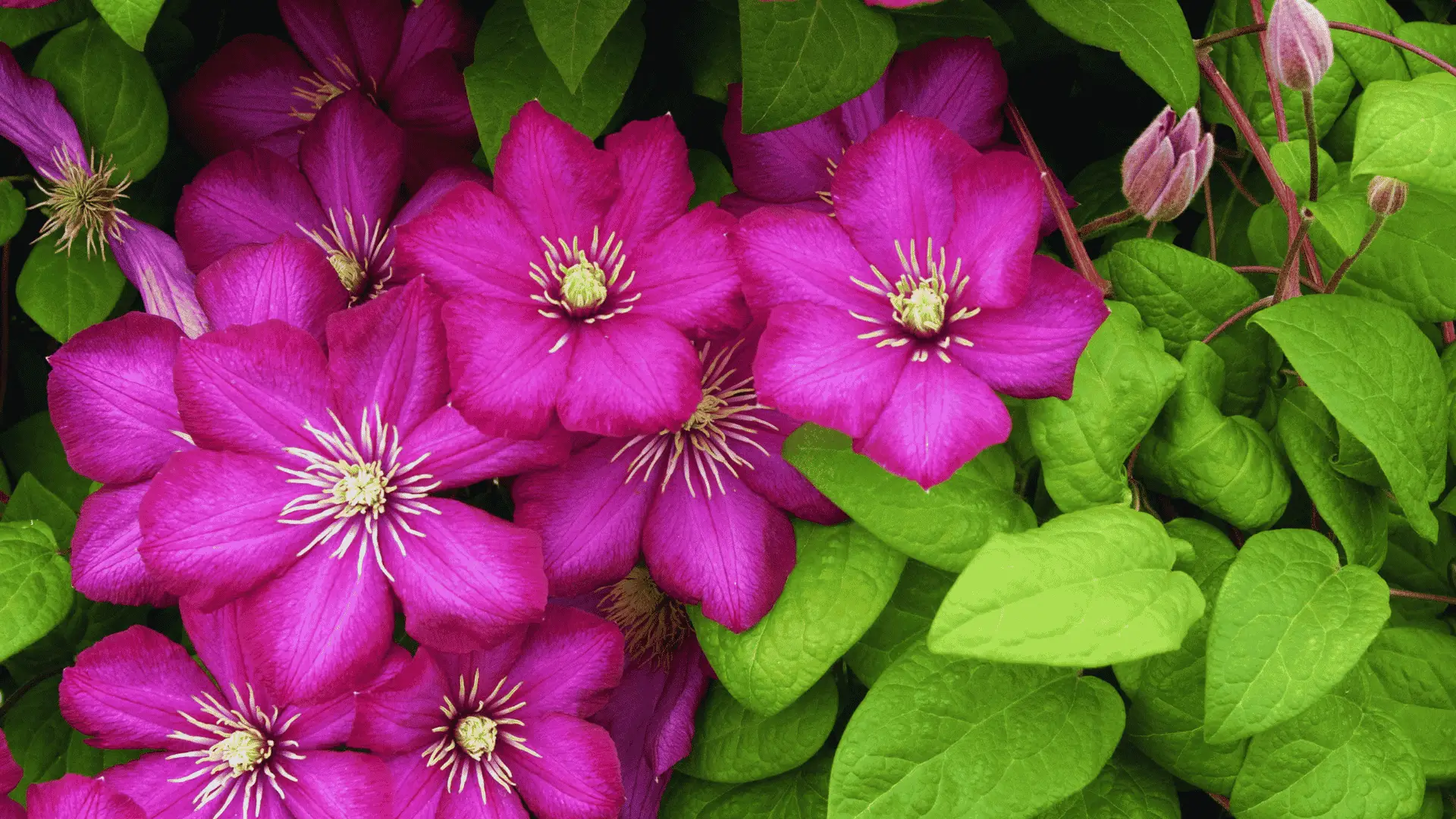Reading Time: 4 minutes 🍃
People often understand different soil types and the nutrients plants need, but they can have questions about compost. There are different types on the market, including ericaceous compost. Ericaceous compost is acidic, and it is designed for plants that are known to require acidic soil.
They don’t do well in alkaline soil with a higher pH. Most plants that do well in ericaceous compost come from the Ericaceae family.
Clematis plants tolerate most soil pH levels and do not require ericaceous compost. Clematis requires good nutritional content, and the best compost for it is John Innes No. 3. The ideal pH for clematis is between 6.0 and 7.0, so it prefers neutral to slightly alkaline soil.
Clematis is tolerant of different soil types, and the most important thing to remember is to give it plenty of nutrients. Continue reading to learn all about growing clematis and ericaceous compost.
How Does pH Level Impact Clematis?
Clematis is a deciduous vine, and it scales fences and trees. It also has some species that are evergreens or perennials. It blooms in the spring, summer, and fall, and it prefers soil with a pH between 6.0 and 7.0.
At this level, the clematis plant can access the nutrients it needs in the correct amounts, including nitrogen, calcium, magnesium, phosphorus, and potassium.
If the pH is higher than this level, the nutrients may still be in the soil, but the pH level could block absorption by the plant’s roots. In addition, when it is above 7.0, the nutrients may be toxic to the plant. If the pH level is too low, the plant may not grow. One clematis species, clematis crispa, prefers more acidic soil between 5.5 and 6.5 pH.
Test Your Soil
If you are growing clematis, you should start by testing your soil. If you find that the pH level is high, you can use ericaceous compost to bring it down. Ericaceous compost is acidic, and it has a pH between 4.0 and 5.0. When you mix it with alkaline soil, it will down the pH levels.
Once you test your soil, you will know what you need to do before planting your clematis. If you find that your soil is in the neutral range, you don’t need to change the pH level. You can use John Innes No. 3 compost to ensure that the plant gets the nutrients it needs.
Best Conditions for Clematis
When you plant clematis, you need to find a nice, sunny place for it. Some will bloom in partial shade, but they do best with at least six hours of sunlight each day. They do well in moist, well-drained soil, and it should be neutral to slightly alkaline.
When you dig a hole to plant your clematis, make sure that you add John Innes No 3 compost and granular organic fertilizer.
You need to be careful with new plants, as they are fragile and can break easily. Make sure that you water it every week in its first season while you are waiting for it to be established. You can add mulch around the base of the plant to hold some moisture in, but don’t let the mulch get too close to the crown.
Ideally, the roots will be in cool shade with the sun on the leaves. You also need to support your clematis because most varieties climb. As your plant grows, it will look for something to grab onto, and if there isn’t anything, it will stop growing. It climbs by wrapping its leaf stems around an object, so the object needs to be ½” or less in diameter.
Some popular items for support of your clematis include twine, wire, thin branches, fishing line, or steel rods.
How to Use Ericaceous Compost
Ericaceous compost is acidic, so it works best with acid-loving plants. If your soil is too alkaline, you can also use it to bring the pH level down. Certain plants require acidic soil because they aren’t able to absorb some of the nutrients in alkaline soil.
It is important to know what your plants need because growing plants at the wrong pH can cause nutrient deficiencies, and you will notice the leaves yellow as the plant grows weak.
What Is Ericaceous Compost Made Of?
In the past, peat was one of the main ingredients in ericaceous compost because it is naturally acidic. However, people have realized that peat extraction leads to environmental degradation, so they are using peat-free alternatives.
You can buy ericaceous compost, or you can make it. People take materials that have a high acidic content, including deciduous leaves, Christmas trees, conifer needles, and coffee grounds, and mix them with sharp sand or acidic soil. You have to continue adding it because the soil will return to a more neutral state over time.
What Type of Soil Is Best for Clematis?
Although clematis can tolerate a range of soil types, it grows best in deep, moist, fertile soil that is well-trained. If your soil is heavy or sandy, you should add organic material before you plant it. Loamy soil is ideal, as it is rich with nutrients and holds moisture that clematis needs.
Clematis is a hungry plant, so you need to add organic fertilizer regularly to ensure that it is getting the nutrients it needs to thrive. If the soil is too sandy, it won’t retain moisture or give the plant much nutrition, and if it is thick or clay-like, it won’t drain enough.
Make sure that you work the soil so that it stays moist but drains well.
Final Words
Clematis prefers to grow in soil that is neutral to slightly alkaline, so you do not need to use ericaceous compost. You can use ericaceous compost to bring the pH down if your soil is naturally too alkaline. Make sure that you feed this plant well so that it can grow to its full potential.
Sources
- https://down-to-earth.co.uk/container-gardening/how-to-grow-clematis-in-containers/

- https://www.rhs.org.uk/plants/clematis/growing-guide

- https://www.finegardening.com/article/3-myths-about-clematis



